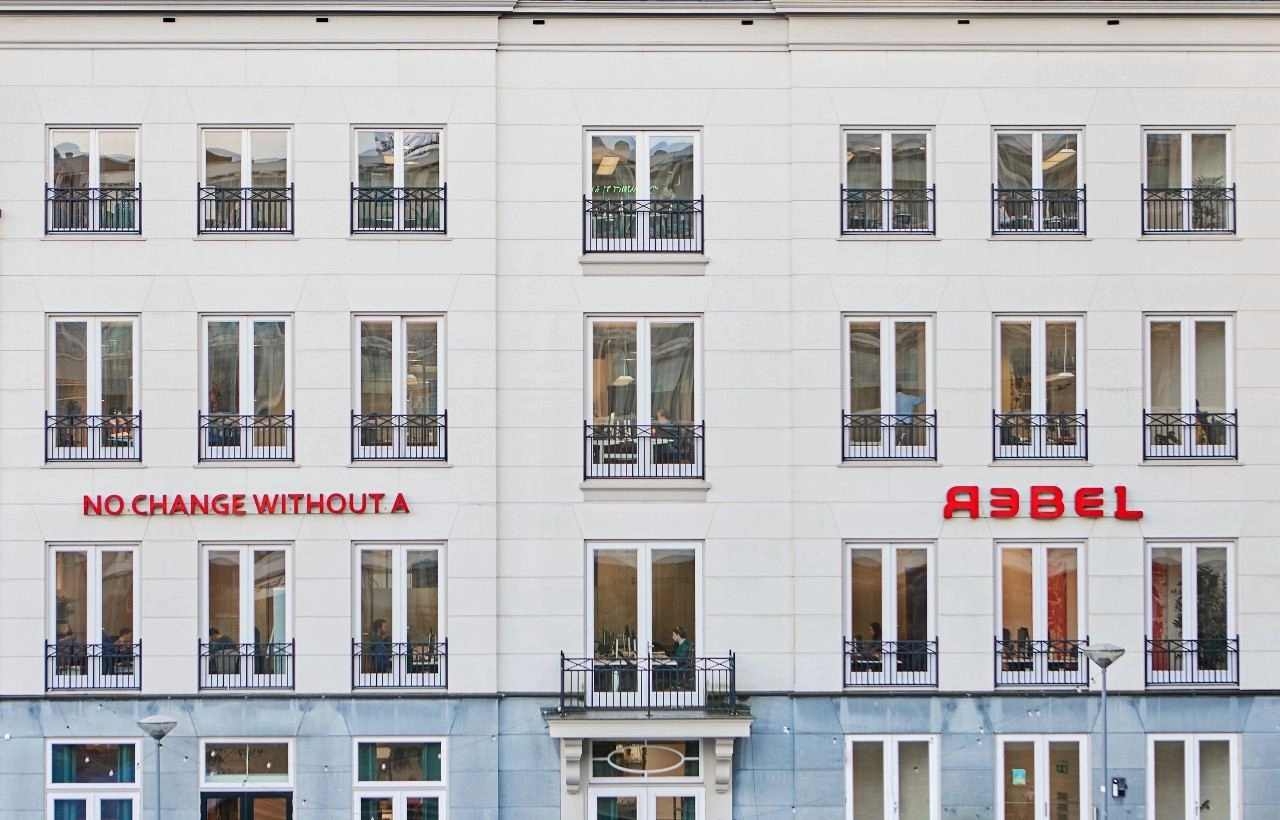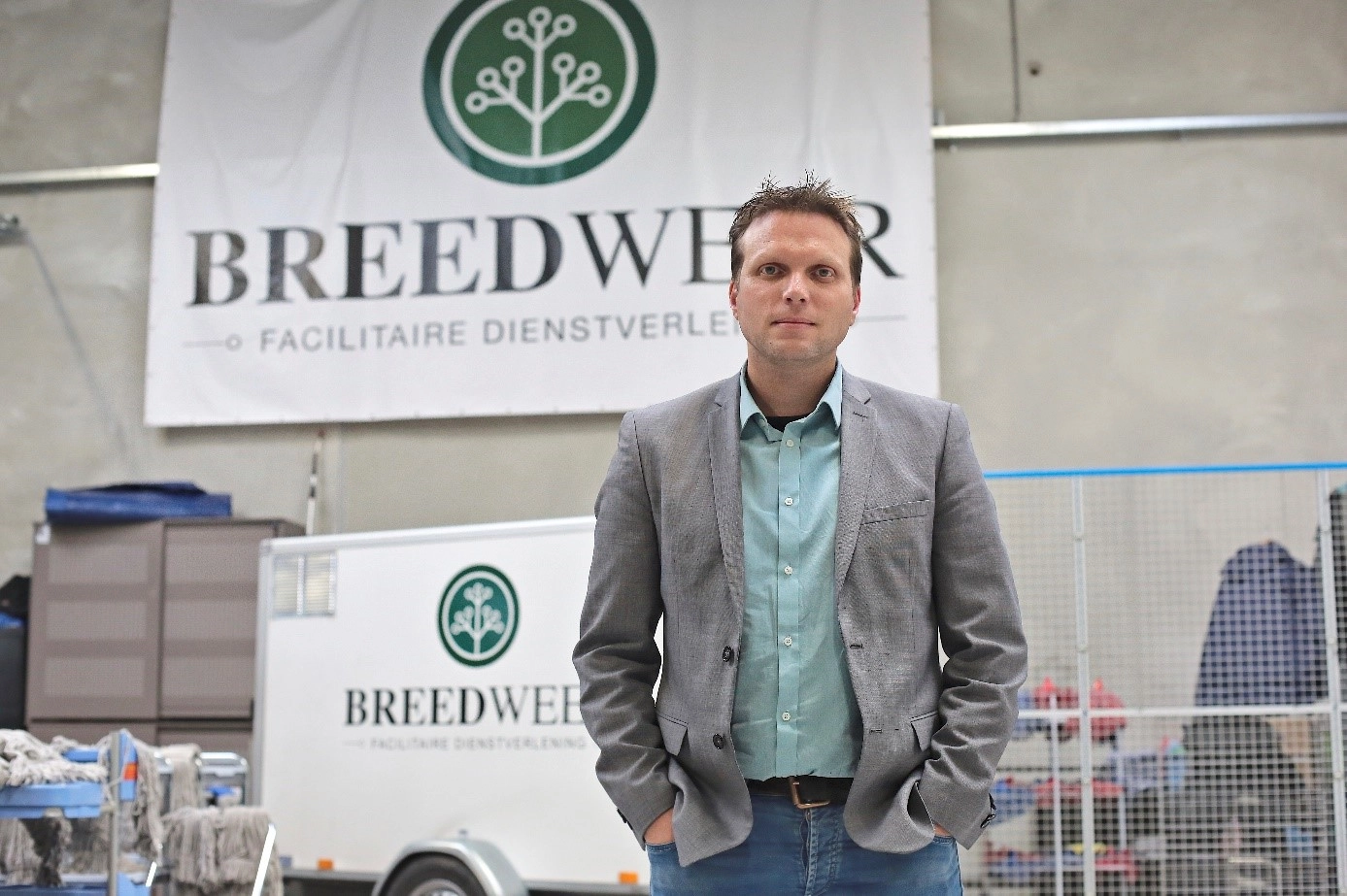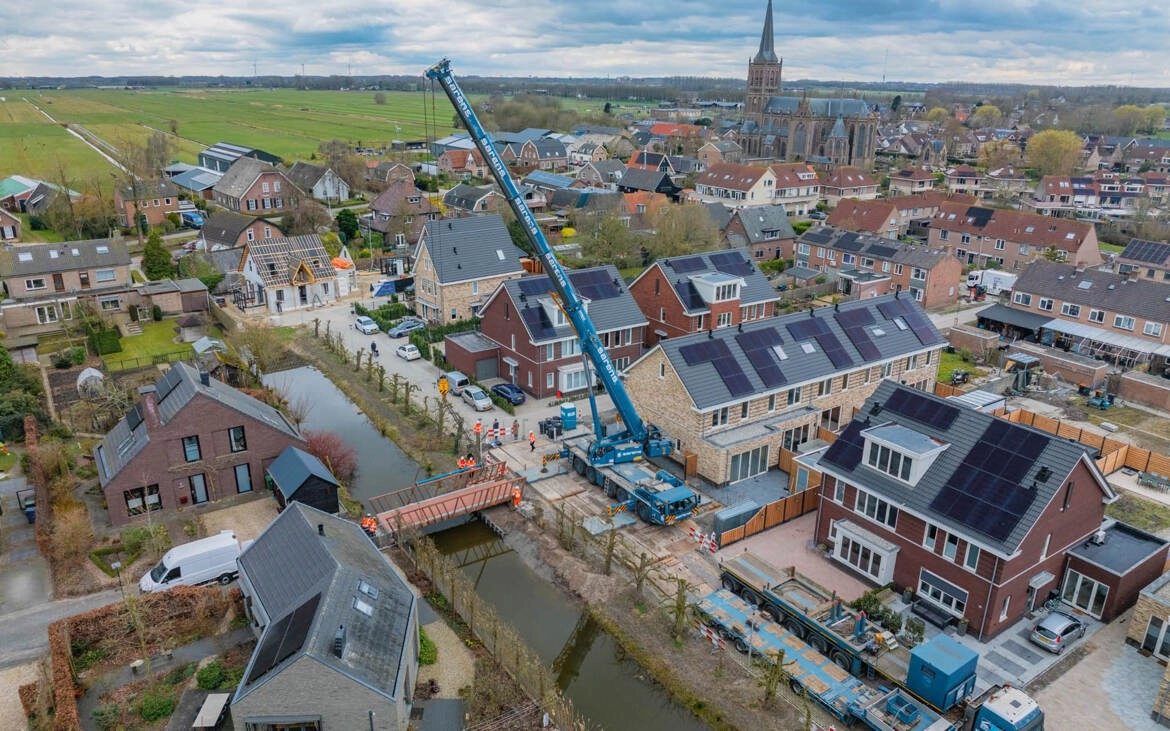Breedweer – provider of facility services such as cleaning – goes far in their fight for a more sustainable and inclusive world. Managing director Jack Stuifbergen accepts that this sometimes hurts the wallet. The CO2 Performance Ladder is one of the tools Breedweer uses to achieve visible impact. Stuifbergen hopes governments will use the Ladder more in tenders in the cleaning industry so that the creation of social value is further rewarded and encouraged.
Social entrepreneurship with impact
Breedweer’s mission to create social and sustainable impact started in 2009 when Jack Stuifbergen came into contact with people who were receiving benefits under Wajong, the Invalidity Insurance Act for young disabled persons. ‘I had a cleaning company at the time and was looking for staff. In doing so, I was confronted with the Wajong target group. Some Wajongers told me how important a job is for them and how much happiness they get from working. That touched my heart. From then on, I decided to put social entrepreneurship and impact at the centre of my work. When the Sustainable Development Goals (SDGs) were launched in 2015, I had a nice hook to hang that impact on and broaden it beyondthe social component.’
Showing what you stand for
Stuifbergen explains how his company fulfils its impact mission. ‘I think a good example is a tender we won a few years ago. The first discussion with the client was not about cleaning, but about the lack of charging stations. This prevented us from carrying out our work emission-free. Those charging stations subsequently came. But what I perhaps liked even more was the aspect of inclusion and diversity. Our account manager Mark likes to walk in women’s clothes. At the introduction with the client, he arrived in a black dress and high heels. That was really a culture shock for the client’s people. But for us, it was important to show what we stand for: everyone can and may be who they are. So it was a kind of statement.’
Getting started with the Ladder
About four years ago, Stuifbergen came across the CO2 Performance Ladder. In the Ladder, he saw a great system that could support Breedweer’s contribution to the SDGs in terms of climate impact and sustainability. ‘I saw the Ladder come up once in a tender issued by The Central Government Real Estate Agency. That triggered me. We were already working on CO2 reduction, but were still looking for a system that could help us measure and monitor everything properly. Moreover, we wanted certification to show the outside world that we really live up to our words. We are proud of the impact we are making, and we should be able to show that.’
Cleaner transport with more sustainable diesel
That initially led to Level 3 certification (3.1), says Stuifbergen. ‘We had already been largely self-sufficient in terms of energy for a few years, thanks in part to 1,400 solar panels and heat pumps at our office. In our energy contracts, we only had green electricity from Dutch soil, as required by the Ladder. For our electric vehicle fleet, we looked very specifically outside our own car parks for charging locations that also fulfilled this Ladder criterion. What did present a major challenge was making our vans with water tanks more sustainable. Because of the weight of these tanks, the range of many electric vans is too short. Vans with a longer range were too expensive. Then we opted for HVO, sustainable diesel fuel made from waste vegetable oils and residual waste. Although this costs one euro more per litre compared to regular diesel, it is much less polluting. So this offsets the pain in the wallet quite a bit.’
Reuse of equipment and waste streams
Besides scope 1 and 2 emissions, Breedweer also started working on scope 3 emissions, emissions in the value chain. This earned the company level 5 certification in 2024. Stuifbergen: ‘In our services, we use a lot of resources and materials. Previously, we almost always bought new products, but now we try to reuse as much as possible. For example, we do not replace cleaning equipment that a client has from a previous supplier, but take it over and refurbish it. Cleaners also wear second-hand work clothes. We also work with clients to reuse waste streams. At the Van Gogh museum, for instance, we collect coffee grounds, which are processed into hand soap by a soap producer. This now comes out of soap dispensers in the museum.’
No concessions to the mission
According to Breedweer, the SDGs and, in particular, the CO2 Performance Ladder, help to engage in dialogue with clients and suppliers on sustainability, says Stuifbergen. ‘With every order or purchase we make, we emphasise the importance of our impact mission and our common goal for a better world. We don’t compromise on that. This sometimes results in difficult conversations, but if a supplier does not want to move with us or does not make enough effort, we say goodbye to them. However unpleasant that may be. The same applies to clients. If we can’t make an impact with a job, we won’t carry it out. That may mean we lose income, but our mission is sacred. We will not deviate from it.’
Few tenders with Ladder in cleaning industry
Although sustainable and responsible business practices are being increasingly encouraged by the government, Stuifbergen still misses the fact that governments also give substance to their green ambitions in their own procurement policies. ‘I have not once been able to use our certification in a tender in recent years. While the Procurement Act – in Article 1.4 (2) – stipulates that governments must choose the party with the most social value. But how to demonstrate this value and link it to CO2 emissions, for example, is never mentioned. Using the Ladder as an award criterion is one way to do so, but unfortunately this does not happen in our experience. At least, not in cleaning contracts. That is a terrible shame, especially when you consider that the government tenders €80 billion a year.’
Educate buyers, inspire the industry
According to Stuifbergen, change does not have to be complicated at all. ‘Just ask the simple question: what kind of social impact does the tendering party think it can make? Then, with our level 5 certification, we would be able to demonstrate that impact. I am currently teaching senior buyers from central government how to quantify social impact. In that, I use the Ladder as one of the examples. But I am also trying to get movement going in other places. At meetings such as trade fairs, I try to inspire industry peers on stages. Although that remains difficult, often the money trumps the rest. That is why it is so important that making social impact is actively encouraged by the government.’
Impact in the veins of employees
Breedweer’s own 800 employees, spread across various business units in the Netherlands, are also, in Stuifbergen’s words, ‘dead-set on impact’. ‘They often notice it from day one, working with reused items. I constantly try to motivate employees to think for themselves about how they can make impact and create circular business models, for example in the products they work with or transport movements. This is not always easy, especially when people are just working here. You have to explain to them not only how we work, but also why we do things the way we do. That requires good communication and a certain mindset. It really has to get into people’s veins.’
Measuring and monitoring ever smarter
The ultimate goal in terms of CO2 reduction is for Breedweer to operate completely emission-free. Stuifbergen: ‘That means we will also stop offsetting CO2, as we sometimes still do now. That’s a challenge, but it’s our holy grail. Meanwhile, we are continuing to report our impact ever more cleanly, both at project level and in a broad sense. We are currently working with an external party on an AI tool that makes CO2 emissions measurable from the invoice flow. So that if a supplier puts a couple of rubbish bags on the invoice, for example, we immediately know what the CO2 emissions from that are. This gives us an even better picture of the emissions and allows us to steer even more in what we do and do not buy. So there are always new ways to further increase the impact, which I think is wonderful.’


